What's on Your Desk, Digital Artist Krishna Sadasivam?
OWC friend, contributor, and all-around amazing artist Krishna Sadasivam kicks off our new "What's on Your Desk?" series with a drool-worthy setup.
Krishna M. Sadasivam • Sep 05, 2023
A professional survives and thrives on both their discipline-specific skills and their tools. Tools cannot replace skill, experience and aptitude, but if you have the requisite know-how, dependable, high quality tools can powerfully augment your capabilities.
I have worked as a professional illustrator for over 20 years. I have served as a design professor for nearly 17 years.
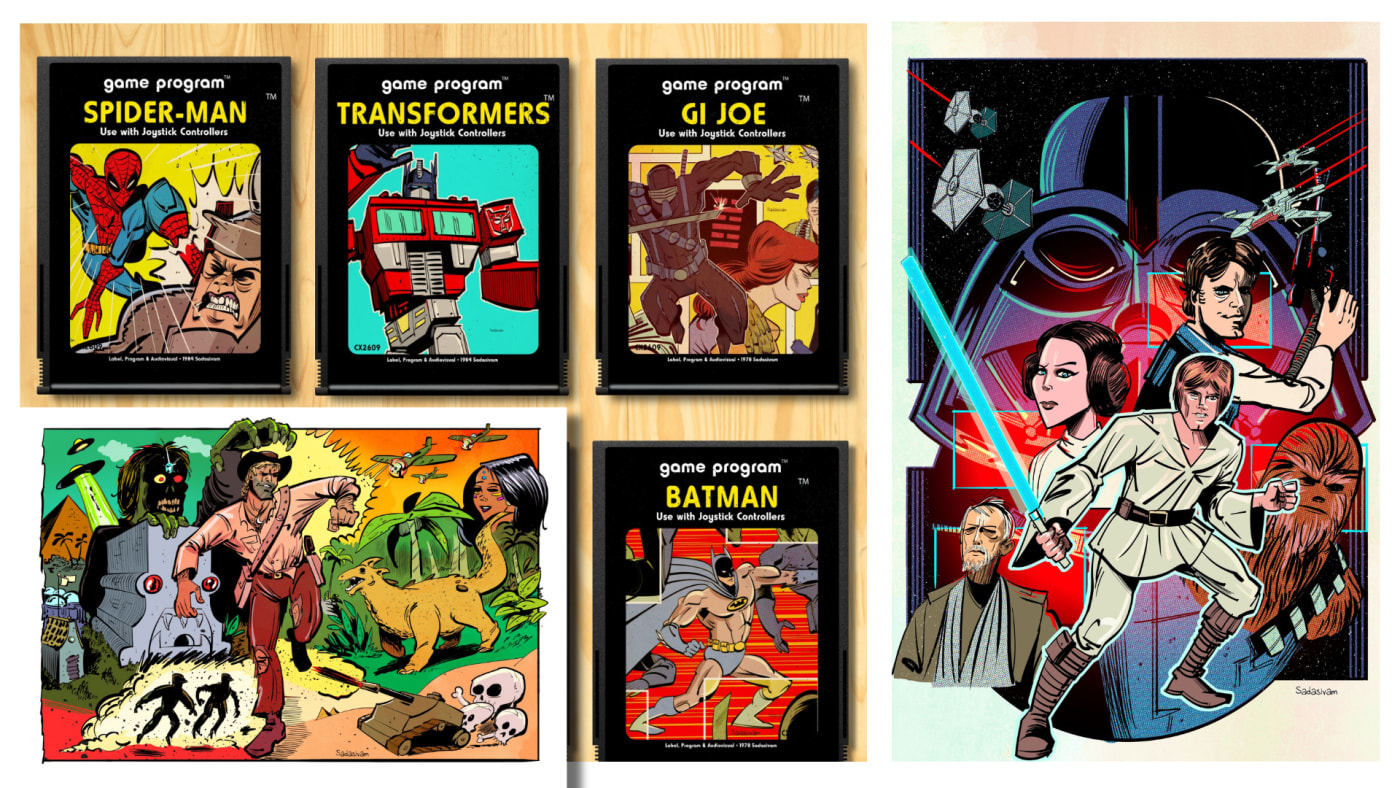
And just last year, I started in earnest as a content creator, building a Youtube channel (@KrishnaDraws) to help intermediate digital artists grow their skillset. A lot has undoubtedly changed in that time, including (unsurprisingly) my desk setup.
I'm very picky when it comes to my tools. Whether it's a brush pen, or a 27" display, I buy for the long term. Below are some photos of my home studio setup.
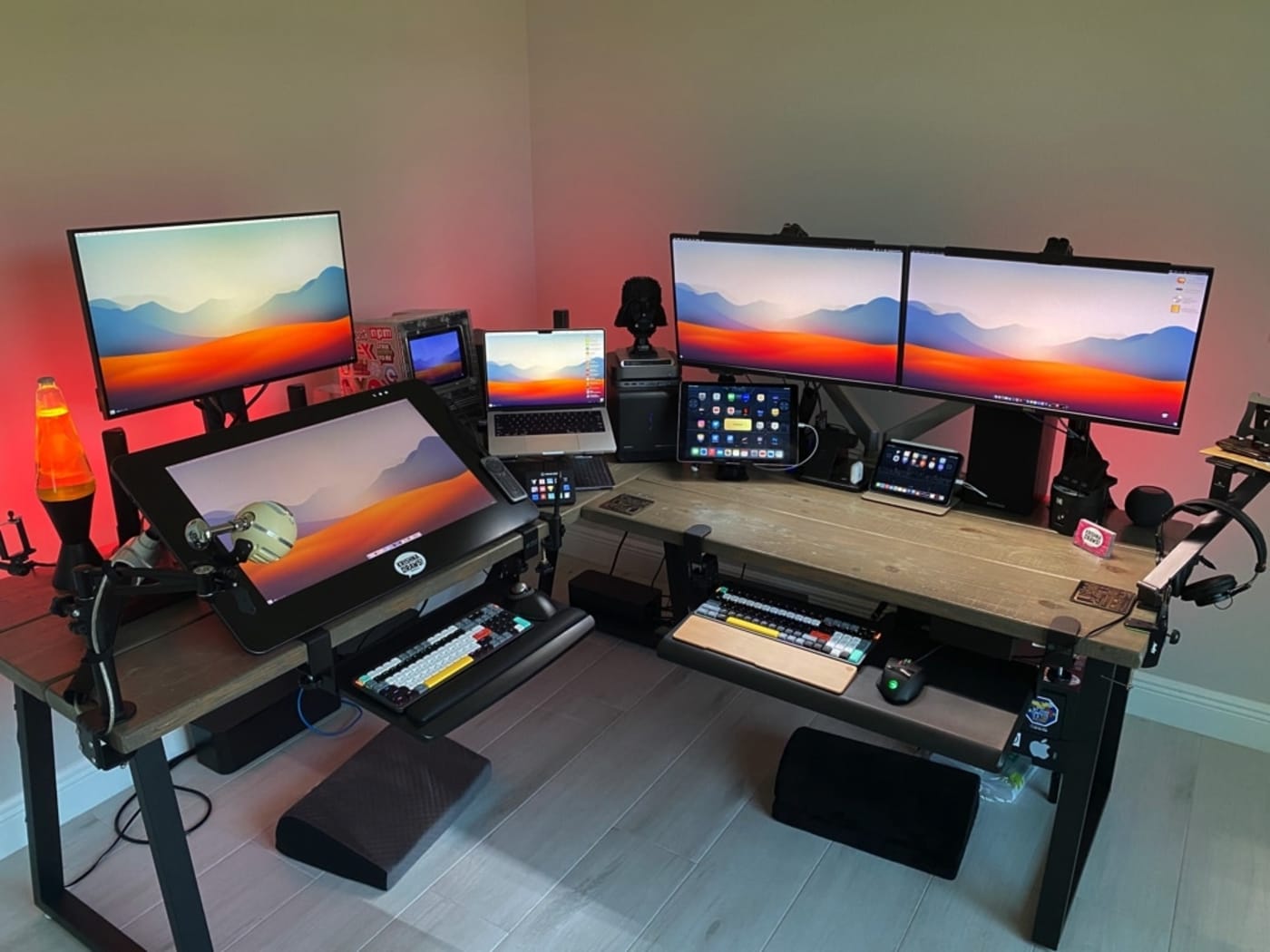
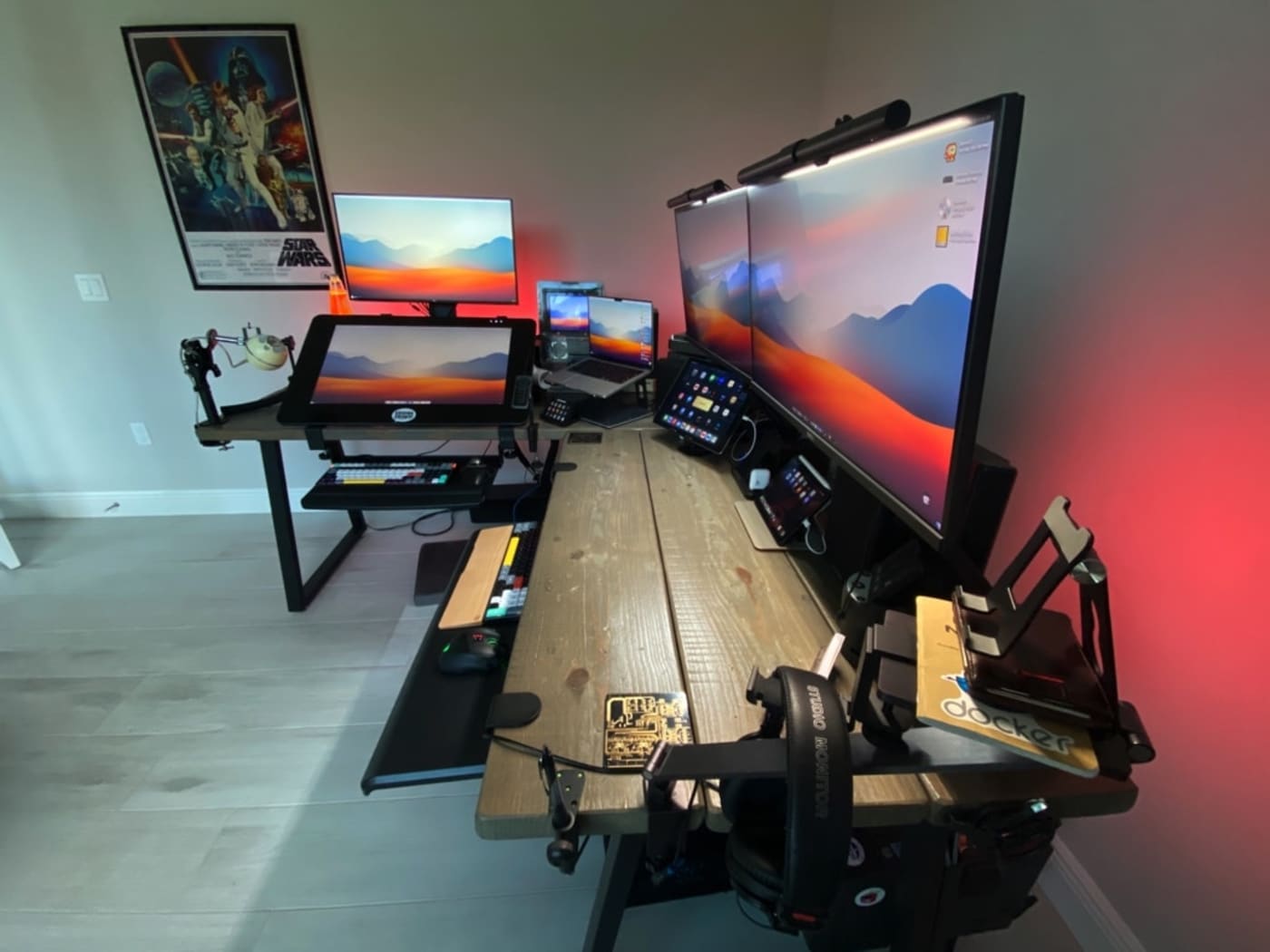
The one constant tool in my arsenal has been my use of Macs. As of this writing, I am currently using a 14" MacBook Pro (2021) with an M1 Pro processor, 32GB of RAM and a 1TB SSD. I also have a 2018 Mac Mini, equipped with 32GB of RAM, a 256GB SSD. and a Sonnet eGPU.
The MacBook Pro operates as my main computer, which I use between my home studio and on campus. It does a really solid job of handling power-hungry programs like Photoshop, Illustrator and Premiere. The Mac mini, once my main machine, now dutifully serves as a dedicated desktop in my home studio, where it's primarily used for research and writing (and occasionally streaming video content).
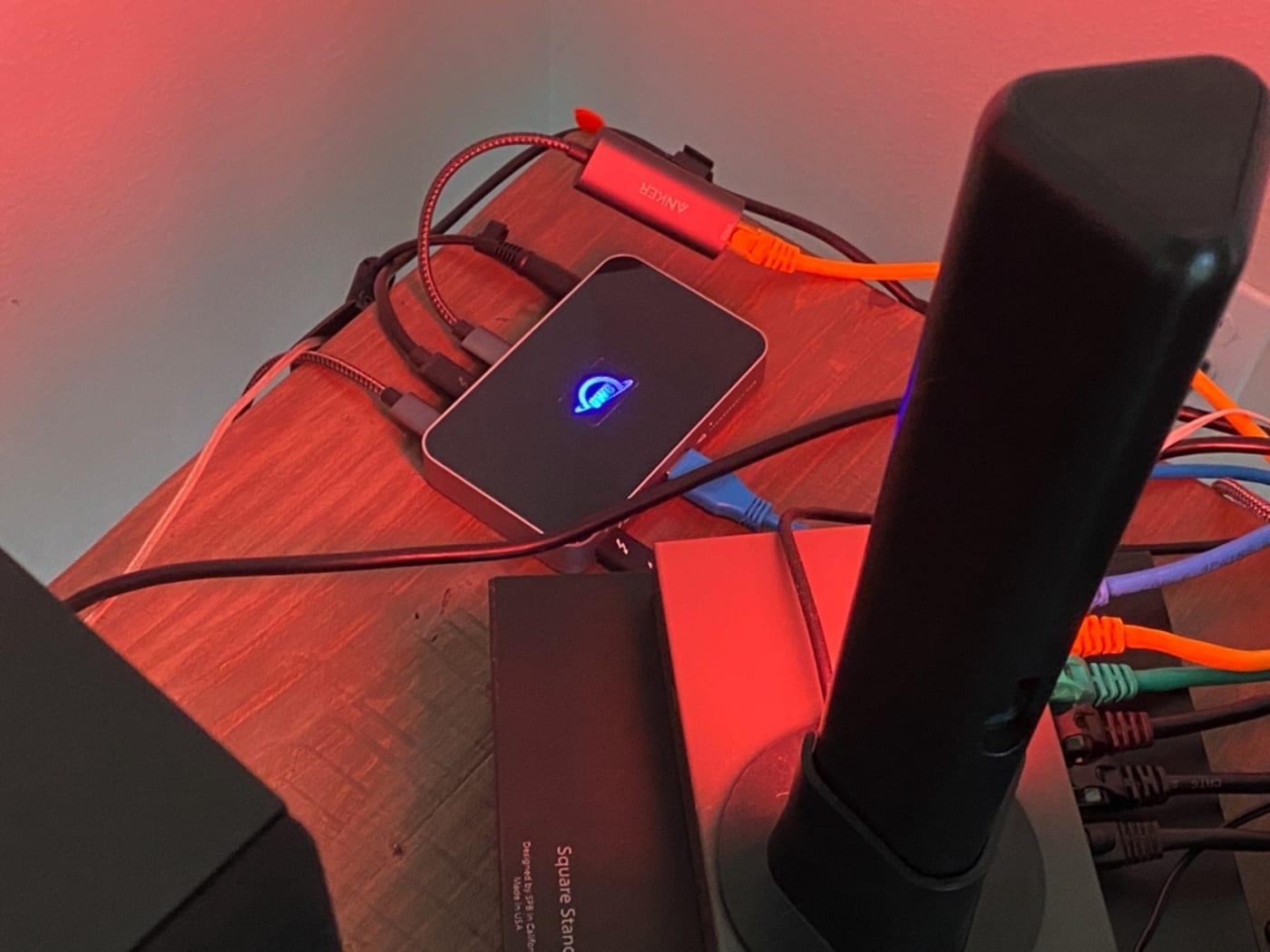
The MacBook Pro is connected to a Dell 27" U2718Q display and a 27" Wacom Cintiq 27QHD. The Cintiq is powerful digital drawing tablet, which I use with a stylus to create my illustrations and comics.
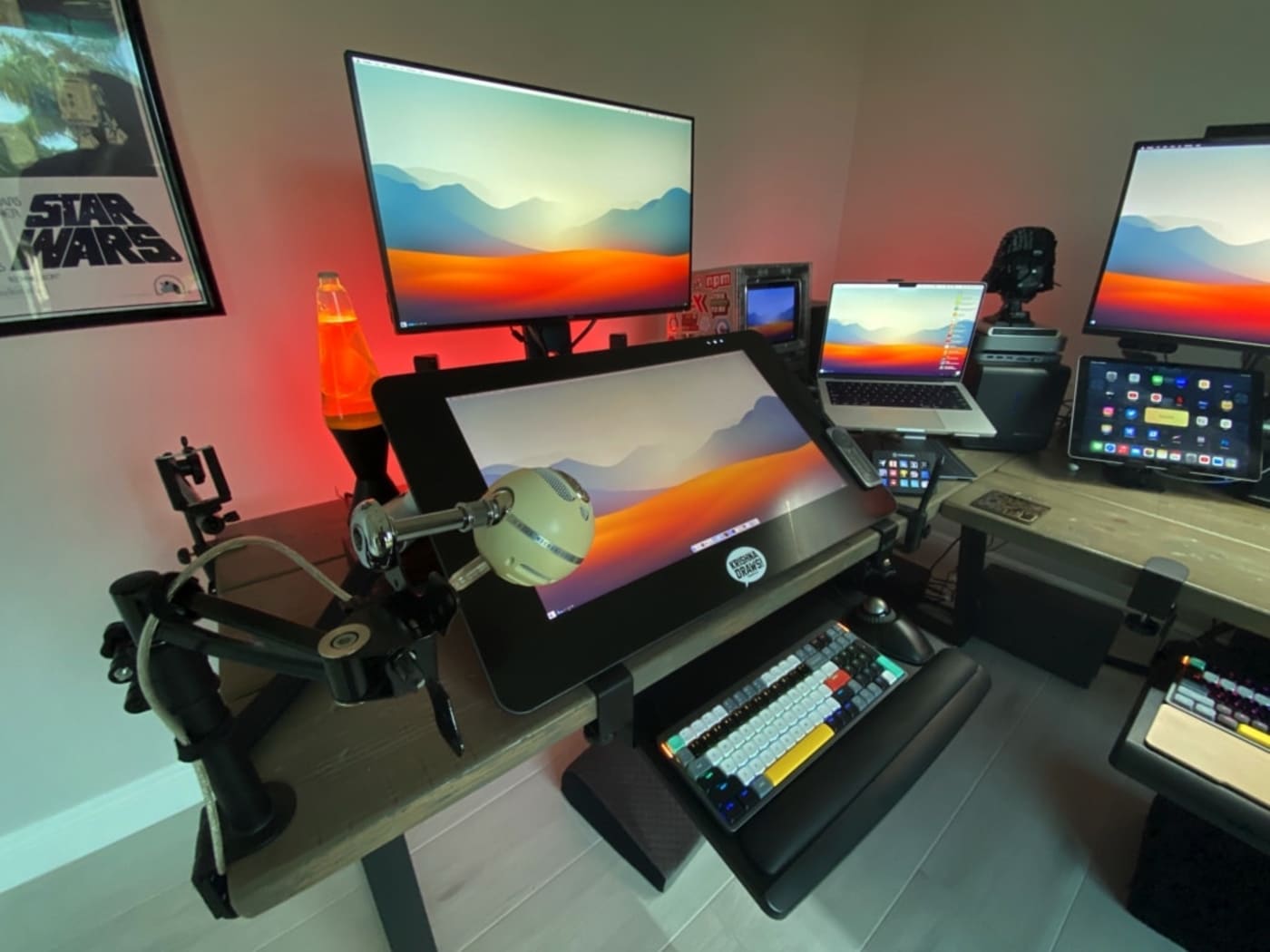

To streamline cable clutter, I use an OWC Thunderbolt Hub, which serves as an intermediary device that connects my MacBook Pro to my Wacom Cintiq, a wired Ethernet to USB-C adapter, and my OWC ThunderBay 4. I picked the OWC Thunderbolt hub for three reasons: access to three additional Thunderbolt 3 ports, OWC's reputation for rock-solid reliability, and its price.
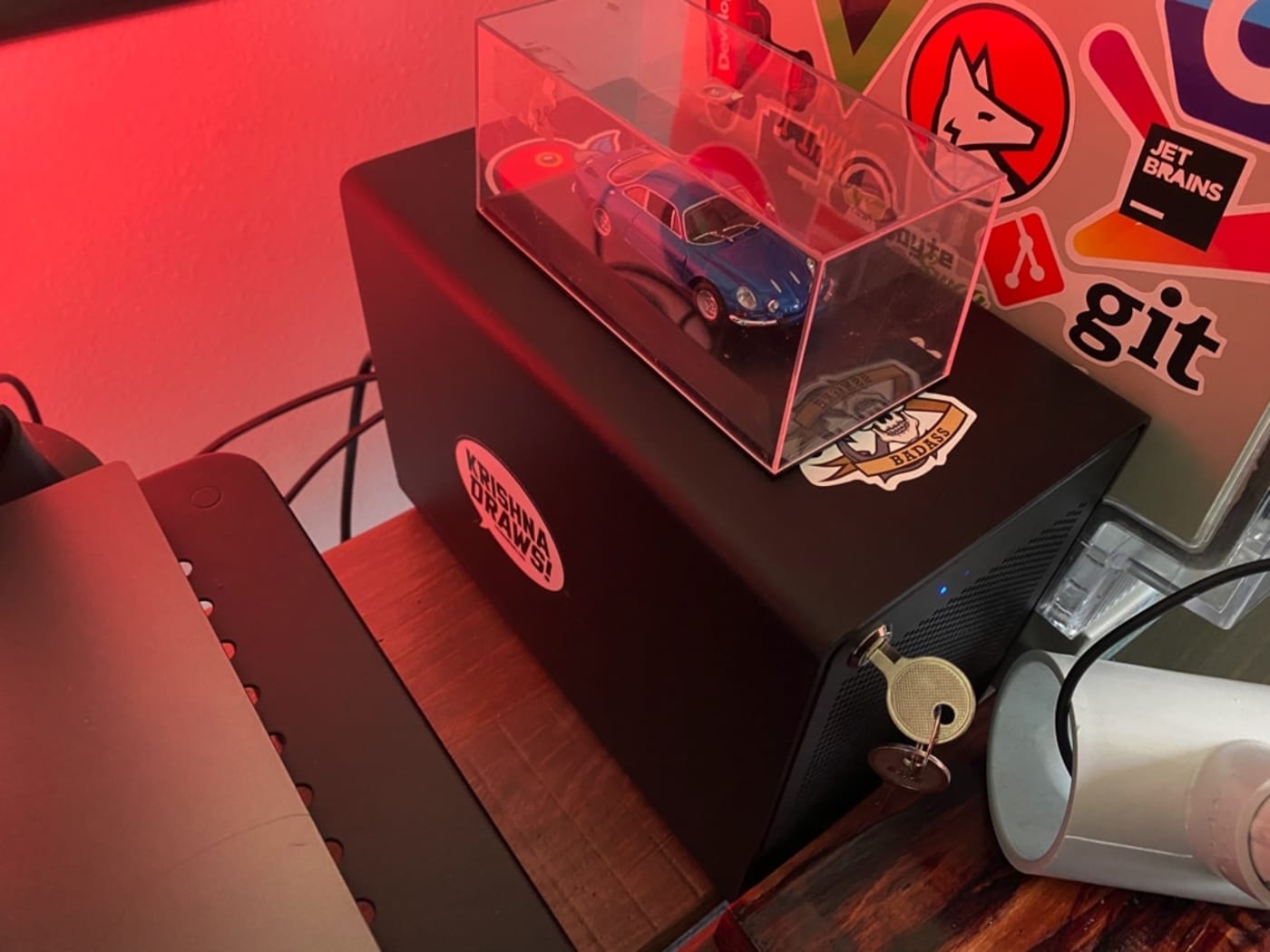
The ThunderBay 4 houses nearly all of my most precious digital files, including important documents, treasured family photos, videos for my YouTube channel along with all my current and archived client work. The ThunderBay4 contains two 2TB SSDs and two 4TB spinning platter drives. Work that I need regular access to is on the 2TB SSD. Older files and archives reside on the 4TB drive.
Both drives have their respective back-up drives in the ThunderBay4, which makes for blazing fast nightly backups (using Shirt Pocket's SuperDuper cloning software). I also really appreciate the inclusion of an extra Thunderbolt3 port on the back of the ThunderBay4. (You can never have too many Thunderbolt ports!)
But that's not all, the ThunderBay 4 also drives my Dell 27" display thanks to its built-in DisplayPort connector. I've owned the ThunderBay4 for at least 3 years, and it has never once given me any problems. (I did lose the key for accessing the ThunderBay4's drives during a move; OWC was gracious enough to send me a replacement set for free.)
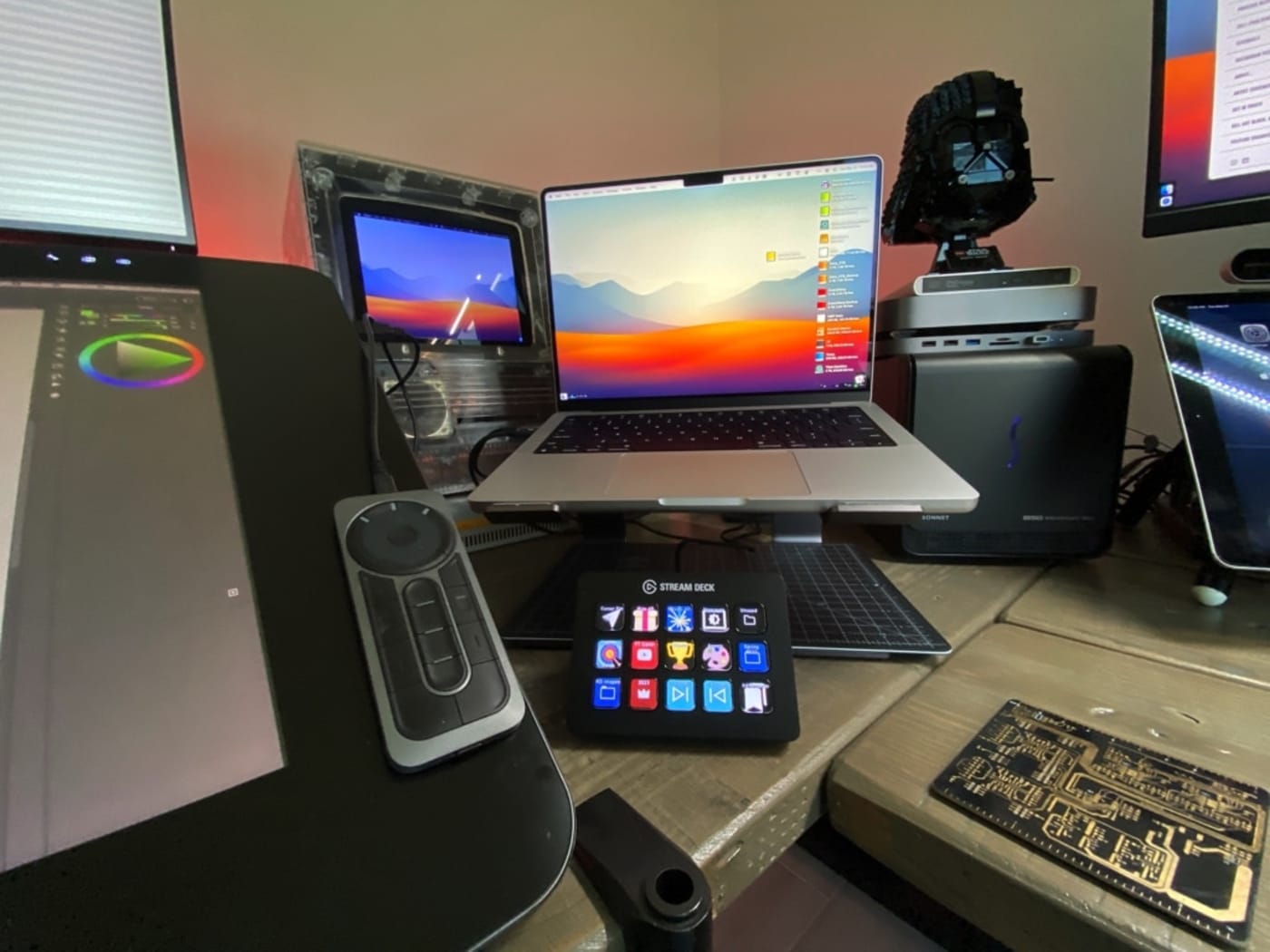
Six months ago, I added a StreamDeck to my setup. The StreamDeck can be used to open apps and perform other automated tasks on your computer with a single press of a button. It's connected to my MacBook Pro, and works with my Mac to run numerous automations as part of my day-to-day workflow.
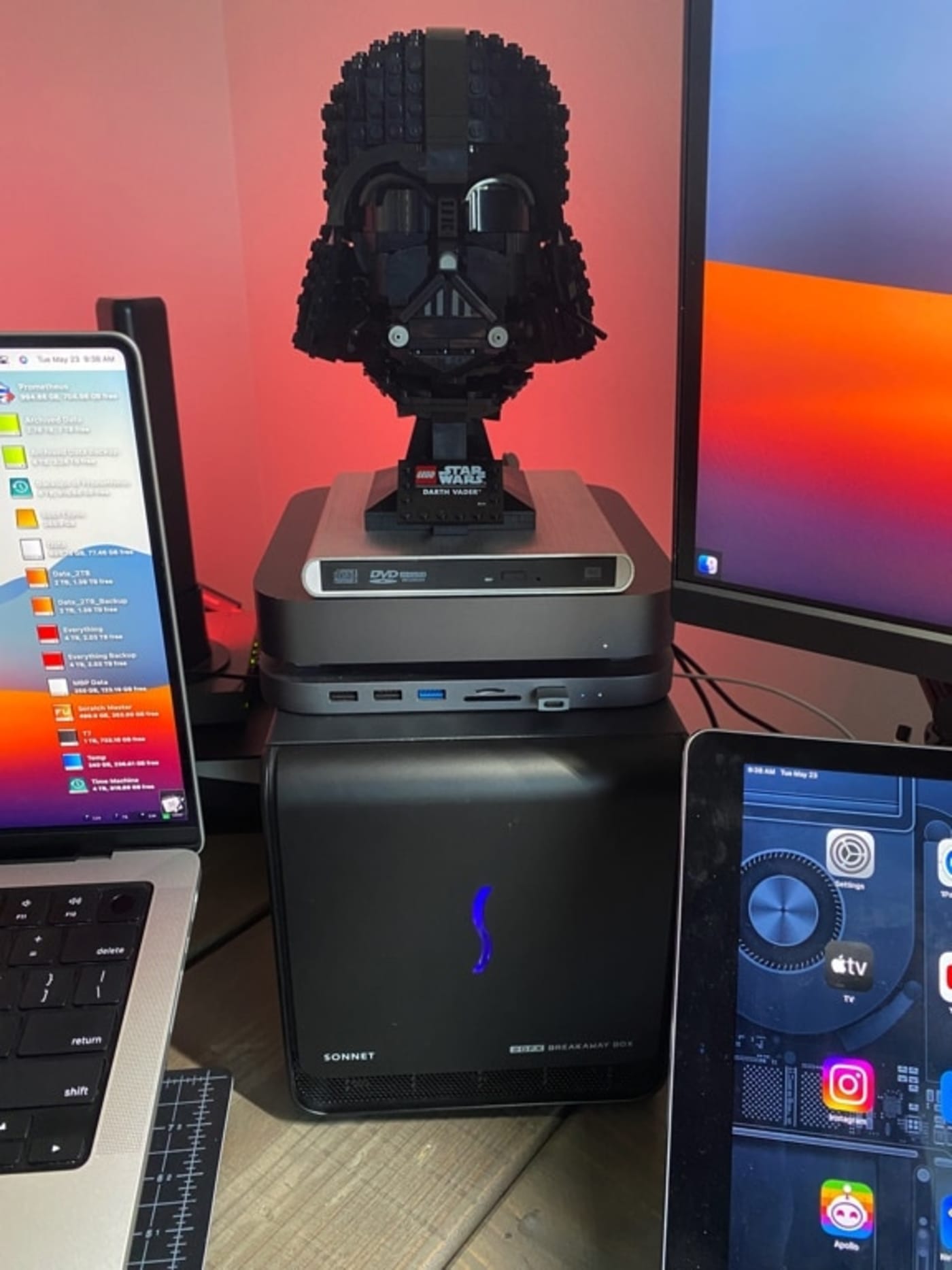
My 2018 Mac mini sits atop a Sonnet Breakaway eGPU and an AGPTEK USB-C docking station. Above that sits a USB external DVD player, for those rare moments where I want to play a DVD or (gasp!) an audio CD.
The Sonnet eGPU drives two Dell 2515H 24" displays and a heavily stickered Mac SE/30 case with a Pimoroni 10" LCD display. (Note: No vintage Macs were harmed in this process - the SE/30 was the victim of a battery bombed logic board.)
I use Nuphy Air96 keyboards with both my Macs. They are incredibly comfortable for long typing sessions and I like the tactile response of the keys. As for pointing devices, I have a Kensington Orbit wired trackball attached to my MacBook Pro and a wired Venus MMO Gaming Mouse for my Mac mini. (I may be in the minority, but I prefer wired peripherals to their wireless counterparts.)
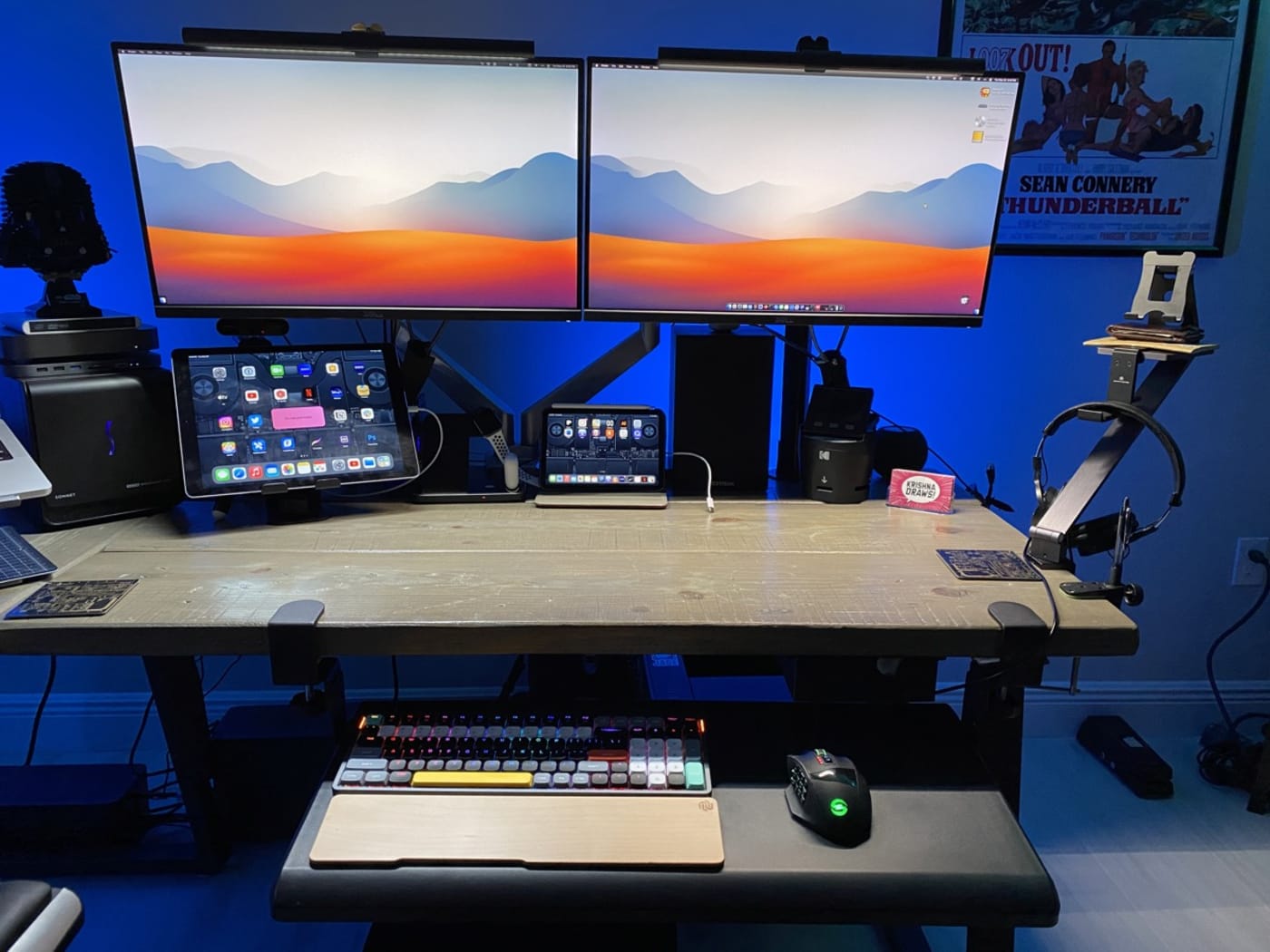
I'm more of a Mac person than an iPad person. That being said, I do find the iPad very useful in my desktop workflows.
I use my 12" 2015 iPad Pro to manage my calendar and appointments, while the 6th generation iPad mini is used for Zoom calls and reading content.
For audio, I have a pair of Bestisan external speakers attached to my Mac mini. They sound great for both music and spoken word, and can easily be had for around $100 US. For headphones, I use a pair of Sony-MDR7506 cans (which are now over 22 years old). Though they have some wear and tear, they still sound great to my ears. I also have a HomePod mini for playing podcasts while I work. I use a Blue Snowball mic, purchased in 2004, attached to a makeshift stand that's C-clamped on my desk.
And speaking of desks, all of the gear listed above sits atop a custom-built L-shaped desk, handmade from reclaimed wood. The last bit of gear I have on my desk is a Kodak Scanza, which I'm using to archive my dad's copious collection of 35mm slides into a digital format. The Scanza is a competent device, allowing me to view and save the scans onto a CF card - but I would be remiss if I didn't mention that the process is time-consuming.
Govee's LED light sticks were added a few months ago to provide some visually interesting color to my work area, while my lava lamp (a holdover from my college days) adds some visual warmth the old fashioned way.
As with most things, I anticipate that my desk setup will evolve and change over time. But for the foreseeable future, my tools do exactly what I need, with very little friction, and that's all I can really ask for.